
The opening day of the HIS Annual Conference (HISCON25) brought together infection prevention and control (IPC) professionals, engineers, clinicians and other healthcare professionals for a day of insightful talks, poster presentations and discussion on the future of preventing healthcare-associated infections (HCAIs) within the healthcare built environment.
Alongside the packed programme, there was an expanded exhibition space, giving delegates the opportunity to explore a wide range of innovative solutions designed to improve IPC practice. From cutting-edge decontamination technologies to water-free systems and environmental monitoring.
This year also saw a six-fold increase in abstract submissions, with over 20 posters on display, showcasing the growing research interest and momentum behind IPC challenges. The poster session gave early career professionals and seasoned experts alike a platform to share learnings, pilot studies and novel interventions, reinforcing the conference’s commitment to evidence-based change.
Systems Thinking in a Complex World
The day kicked off with a compelling keynote lecture from Dame Judith Hackitt, who offered a timely reminder of why systemic thinking is essential in high-risk, complex organisations like the NHS. Drawing on her experience as a chemical engineer and former Chair of the Health and Safety Executive, she described how the Hackitt Review, commissioned in the wake of the Grenfell Tower tragedy, went beyond regulatory reform to challenge cultural and systemic complacency.
Dame Judith urged the audience to move past a culture of box-ticking compliance and embrace accountability, transparency and proactivity. Her use of the Swiss-cheese model resonated, showing how multiple imperfect layers of defence can still work together to create a robust and resilient system. Her parting message, that “doing our job in a complex and interconnected world requires collaboration and teamwork”, left a lasting impression, and resonated with the attendees of HISCON, who were coming together across disciplines to enable safer hospitals.
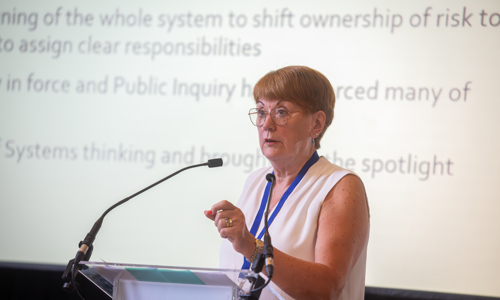
Combating AMR Through Design Innovation
The next session of the morning was the joint presentation by Tim Ho and Manjula Meda from Frimley Health, who examined the formidable challenge of antimicrobial resistance (AMR) and how the physical environment of hospitals can either help or hinder progress.
Frimley Park Hospital’s innovative move to water-free care in the ICU stood out as a practical and pioneering example. By removing traditional sinks and rethinking water use, they tackled a significant AMR transmission route through hospital water systems. This wasn’t just a facilities upgrade, but a coordinated cultural change driven by teamwork across clinical and estates teams.
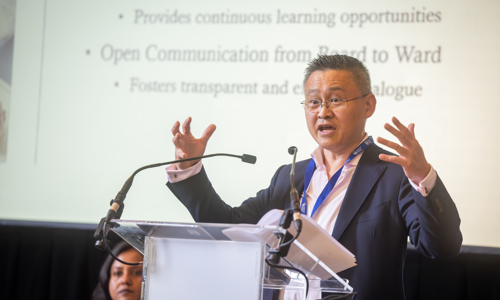
Competence is Key
A thread running through the morning sessions was the need for professional competence across all disciplines involved in healthcare infrastructure. Talks from Mike Weinbren, Nigel Keery, and members of the New Hospital Programme team, including Alpa Patel and Rahul Chodhari, highlighted that the future of safe hospital environments depends not just on better buildings, but on better collaboration.
They made the case that competence isn’t just about individual expertise, but about a collective capability to work together across IPC, engineering, construction and operations.
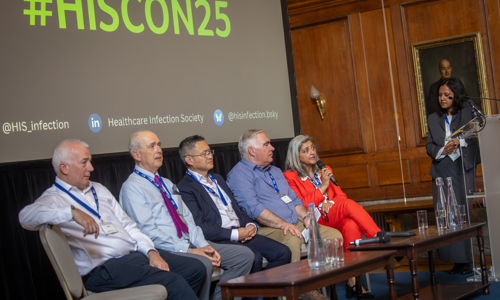
The afternoon sessions kicked off with Susanne Surman-Lee introducing the new NHS Estates Technical Bulletin (NETB 2024/3) designed to enhance the Health Technical Memorandum 04-01 (HTM 04-01) on safe water in healthcare premises.
This guidance is a direct response to a coroner’s Prevention of Future Deaths (PFD) report following the tragic loss of two patients to Mycobacterium abscessus, part of the broader group of nontuberculous mycobacteria (NTM). Drawing from decades of outbreak investigations, Susanne made it clear: the risks from waterborne pathogens extend far beyond NTMs, and far beyond taps and sinks.
She highlighted how the new bulletin broadens the scope of water safety to include a wider array of opportunistic pathogens - and calls for a shift in mindset. It’s no longer enough to follow prescriptive standards. Susanne took into account the Hackitt report, requiring a HACCP risk-based approach using risk-assessed standards and guidance at every stage of the process, rather than simply complying with prescriptive requirements.
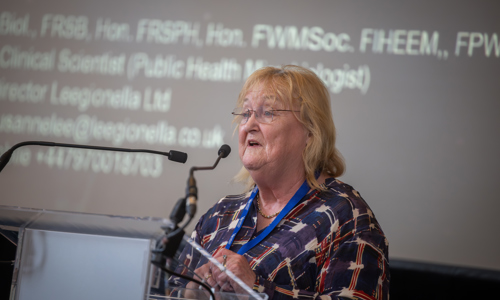
Next, Jessica Martin and Trupti Patel brought the guidance to life with a conversational, implementation-focused session. Recognising that many of the NETB 2024/3 recommendations are aimed at new builds and refurbishments, they also made the case for retrofitting and applying key principles to existing infrastructure where feasible. They didn’t shy away from acknowledging the challenges. From funding constraints to infrastructure limitations and organisational culture, barriers do exist. But so do opportunities - especially when IPC, estates, and microbiology teams work in true collaboration.
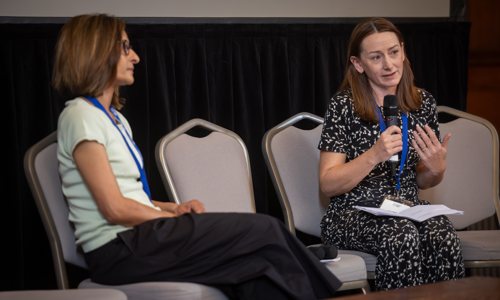
Closing day 1, Kevin Wellman, CEO of the Chartered Institute of Plumbing and Heating Engineering (CIPHE), took a step back to offer a broader public health perspective.
He delivered a stark reminder that water-related health threats - including Legionnaires’ disease, pseudomonas, and thermal injuries from scalds and burns - continue to cause preventable harm across the UK and beyond.
But Kevin’s message wasn’t just about risk - it was a call for collaboration and competence in an era of growing complexity and workforce shortages. He argued that the UK’s water safety challenges are exacerbated by a widening skills gap, particularly in plumbing, building services and estates maintenance.
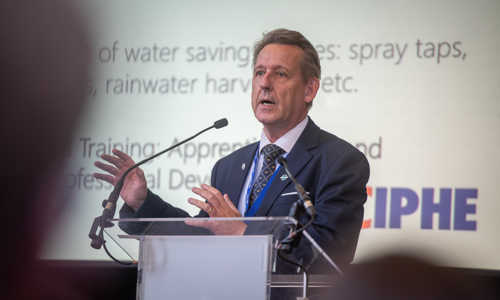
A Unified Message: Prevention by Design
NETB 2024/3 represents a major step forward in moving from reactive fixes to proactive design. But delivering change will require the courage to question old assumptions, to work across disciplines, and to make decisions with safety, not just cost or convenience, as the guiding principle.
From the systems-level perspective of Dame Judith Hackitt to practical, on-the-ground innovations in infection control, the message was clear: safe healthcare environments are not just built, they are engineered through culture, collaboration, and a commitment to continual learning.
We extend our sincere thanks to the organising committee for curating an insightful HISCON programme: Jerry Jincy, Mike Weinbren, Susanne Surman-Lee, Manjula Meda and George McCracken